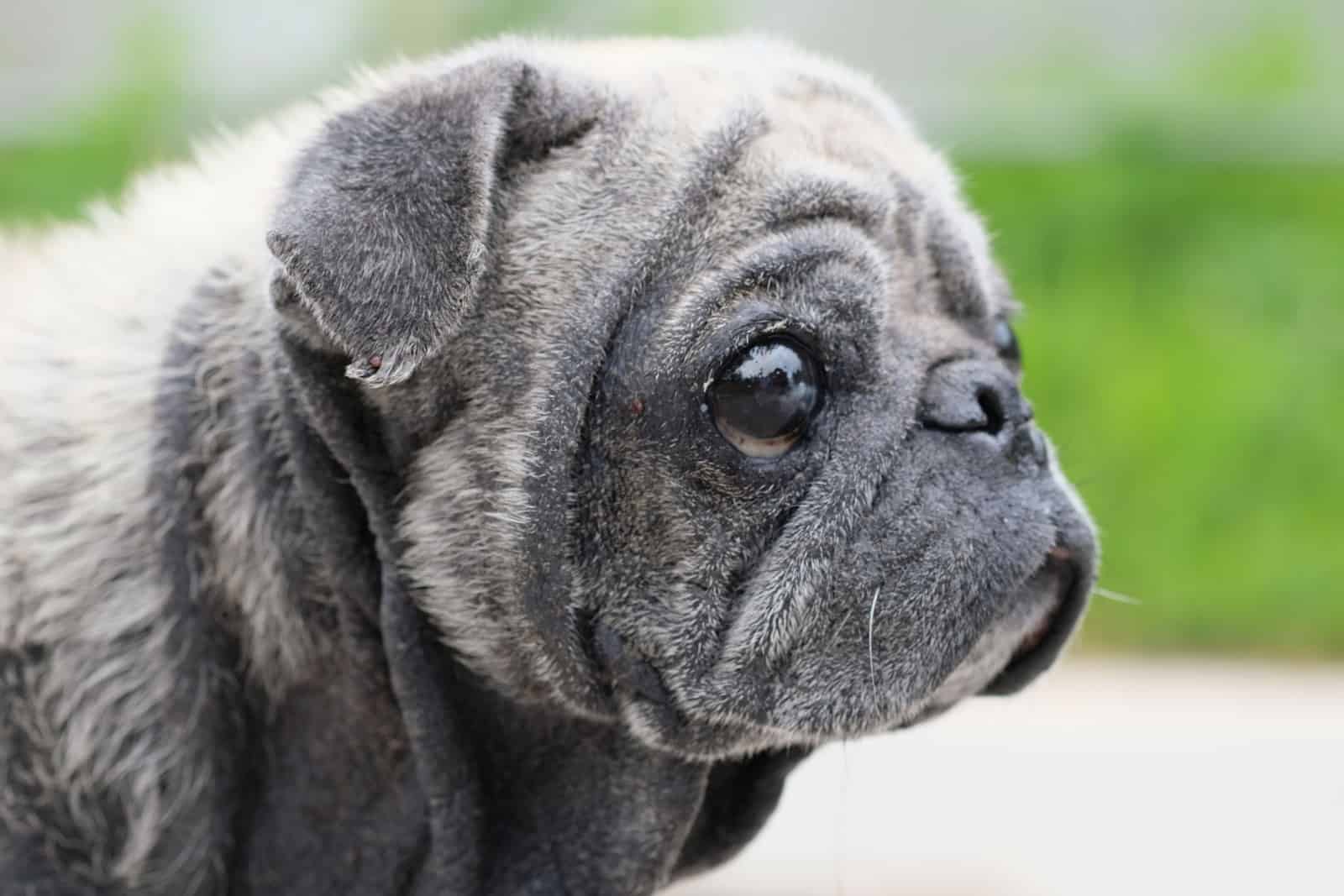Dry flaky skin on dogs is a common condition that can be caused by a variety of factors, including allergies, infections, parasites, environmental conditions, and poor diet.
It can occasionally lead to bigger, more serious issues, so it’s important for all pet owners to be aware of the risks. In this article, we will cover the most common causes, symptoms, and treatments of dry flaky skin on dogs.
By understanding the causes and treatment options for dry skin, you can help to keep your dog’s skin healthy and comfortable.
What Is Dry Flaky Skin On Dogs?
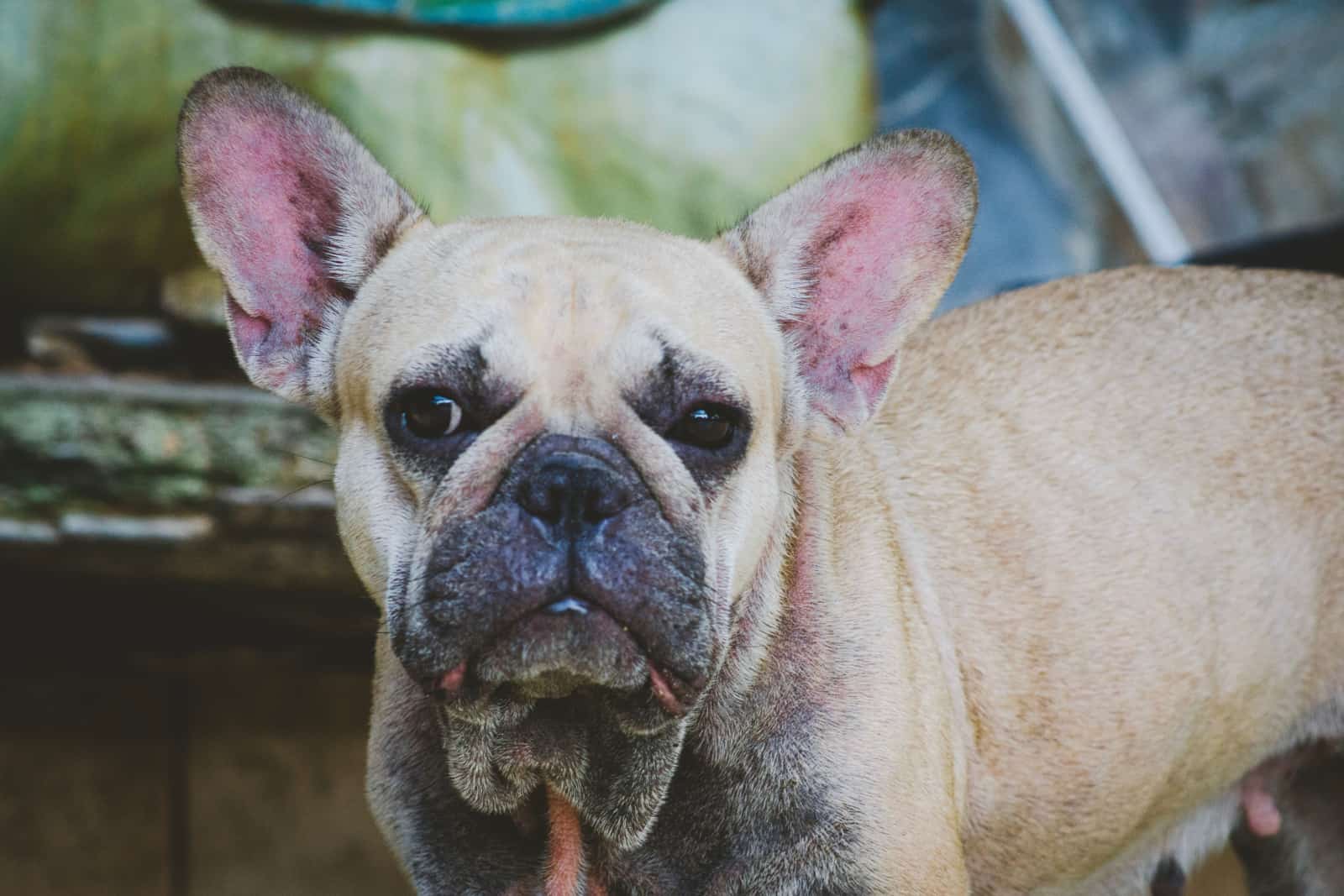
Dry flaky skin on dogs is a common condition that occurs when the skin becomes dry and starts to shed or flake off, in small pieces.
This can be caused by a variety of factors, including allergies, skin infections, parasites, environmental conditions, and poor diet. In some cases, dry flaky skin can be a sign of a more serious underlying health condition, such as a systemic disorder.
What Causes Dry Flaky Skin On Dogs?
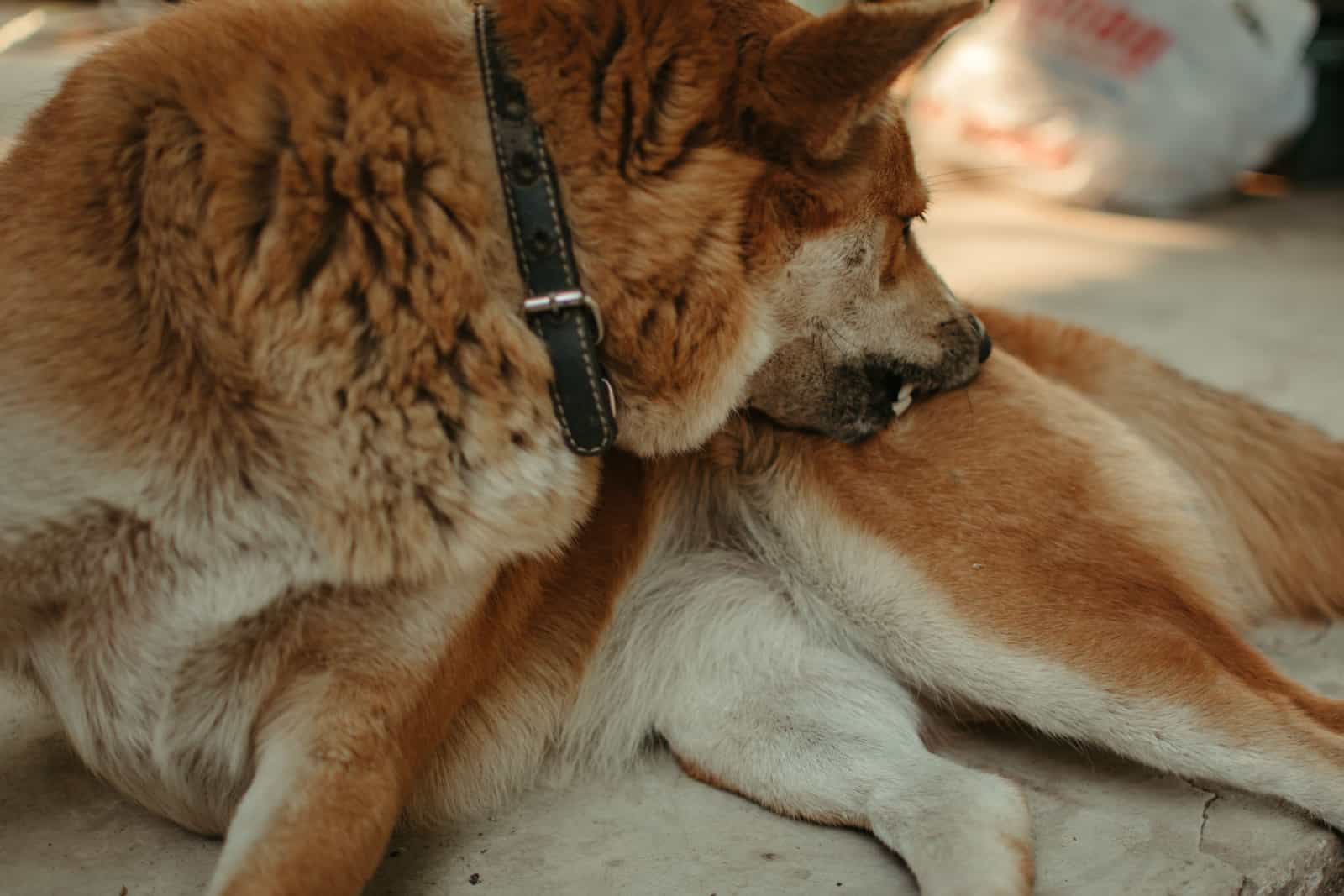
Flaky skin on dogs can be caused by a variety of factors, including underlying health conditions, allergies, infections, parasites, immune system deficiencies, environmental conditions, and diet.
In some cases, flaky skin may be a sign of a more serious issue, such as a hormonal imbalance or a systemic disorder. It is important to consult a veterinarian if you are concerned about your dog’s skin health or if you notice any changes in its skin or coat.
The veterinarian will be able to determine the underlying cause of the flaky skin and recommend appropriate treatment options. By addressing the cause of the flaky skin, you can help to prevent further complications and keep your dog comfortable.
We have listed some of the most common causes of dry and flaky skin below.
Allergies
Dogs can develop allergies to a variety of things, including certain types of food, pollen, and other environmental allergens. They can also have seasonal allergies, similar to humans.
Allergic reactions can cause dry, itchy skin, which can lead to flaky skin if the dog scratches excessively.
Allergies can be a cause of flaky skin on dogs. Dogs can develop allergies to a variety of things, including certain types of food, pollen, and other environmental allergens.
Allergic reactions can cause a variety of symptoms, including dry, flaky skin, redness, and itching. If the dog scratches excessively, the flaky skin may become more pronounced.
There are several types of allergies that can affect dogs, including food allergies, environmental allergies, and contact allergies.
Dogs can develop allergies to certain ingredients in their food, such as proteins or carbohydrates. Symptoms of food allergies may include dry, flaky skin, vomiting, diarrhea, and difficulty breathing.
Also, dogs can develop allergies to certain environmental allergens, such as pollen, mold, and dust. Symptoms of environmental allergies may include dry, flaky skin, sneezing, coughing, and difficulty breathing.
And finally, dogs can develop allergies to certain materials from their surroundings, such as certain types of bedding or certain types of cleaning products. Symptoms of contact allergies may include dry, flaky skin, redness, and itching.
Infections
Bacterial, fungal, and yeast infections can cause dry, flaky skin on dogs. These infections can be treated with antibiotics or antifungal medications, depending on the type of infection.
These infections can be caused by a variety of factors, including underlying health conditions, allergies, parasites, and environmental conditions.
More specifically, bacterial infections are caused by the presence of harmful bacteria on the skin, while fungal infections, also known as dermatophytosis, are caused by the presence of fungi on the skin.
These infections can cause a variety of symptoms, including dry, flaky skin, redness, and itching. These infections can be treated with antifungal medications.
It is important to consult a veterinarian if you suspect your dog may have a bacterial or fungal infection, such as ringworm, for example. The veterinarian will be able to diagnose the infection via skin scraping and recommend appropriate treatment options.
By treating the infection, you can help to prevent further complications and keep your dog comfortable.
Parasites
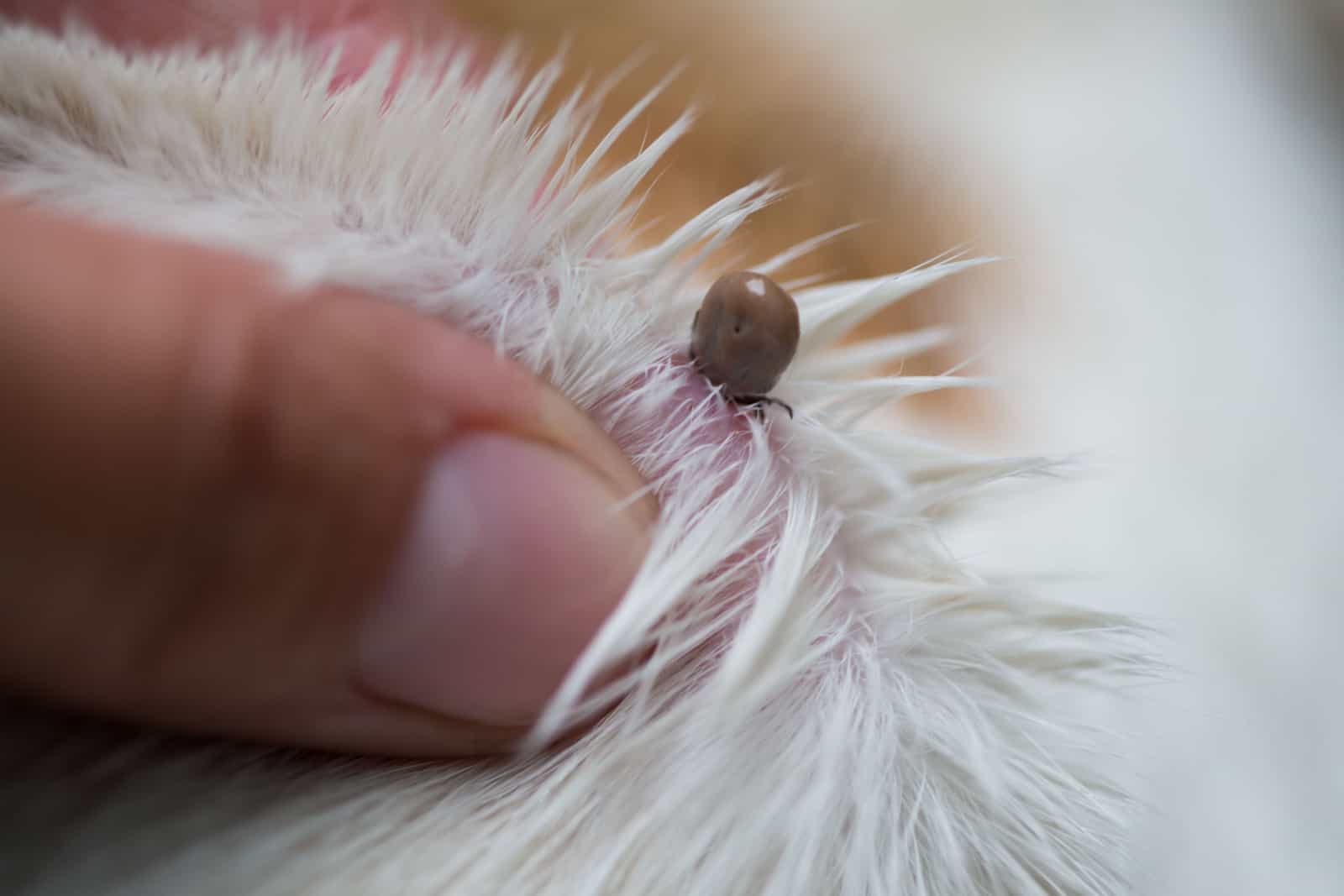
Parasites can often be the cause of dry, flaky skin on dogs. These parasites can cause dry, flaky skin on dogs, as well as itching, redness, and hair loss, and they can be treated with topical or oral medications.
Parasites are organisms that live on or inside the body and rely on the host for survival. There are several types of parasites that can affect dogs, including fleas, mites, and ticks.
Fleas are insects that feed on the blood of animals and pose a huge health risk. In fact, one of the most frequent skin conditions in all dog breeds is an issue known as flea allergy dermatitis, which is caused by the flea’s saliva.
Mites are tiny parasites that can live on the skin or in the ears of dogs. There are several types of mites that can affect dogs, including Demodex mites, scabies mites, and ear mites.
Ticks are small, blood-sucking parasites that can attach to the skin of dogs. They are a nuisance to dogs, but they can also be crawling with infections. Check your dog’s coat for ticks regularly and carefully, and make sure to get all of them out of there.
Environmental Conditions
Extreme weather conditions, such as cold, dry air or hot, humid air, can cause dry, flaky skin on dogs.
Cold weather can strip the skin of its natural oils, leading to dryness and flakiness. Hot, humid air can cause sweating, which can lead to flaky skin if the skin is not kept hydrated.
There are several things you can do to help prevent dry, flaky skin caused by environmental conditions, and we’ve listed some of them below.
Keep your dog indoors. If possible, try to keep your dog indoors, especially during extreme weather conditions. This can help to protect their skin from harsh elements.
Keep your dog hydrated. Make sure your dog has access to clean, fresh water at all times to help keep their skin hydrated.
Poor Nutrition
If the dog’s diet is poor, it can lead to dry, flaky skin. Make sure your dog is getting enough essential nutrients, including fatty acids, to help maintain healthy skin.
Omega-3 fatty acids are extremely important for maintaining healthy skin and coat. If your dog is not getting enough of these nutrients, its skin may lose its strength and elasticity, which will lead to it becoming dry and flaky.
In addition to fatty acids, it is important to make sure your dog’s food is high-quality and contains all of the essential nutrients they need to maintain overall health.
This includes protein, carbohydrates, vitamins, and minerals. Feeding your dog a well-balanced diet, and possibly including some supplements, can help to prevent dry, flaky skin and promote overall health.
Poor Grooming
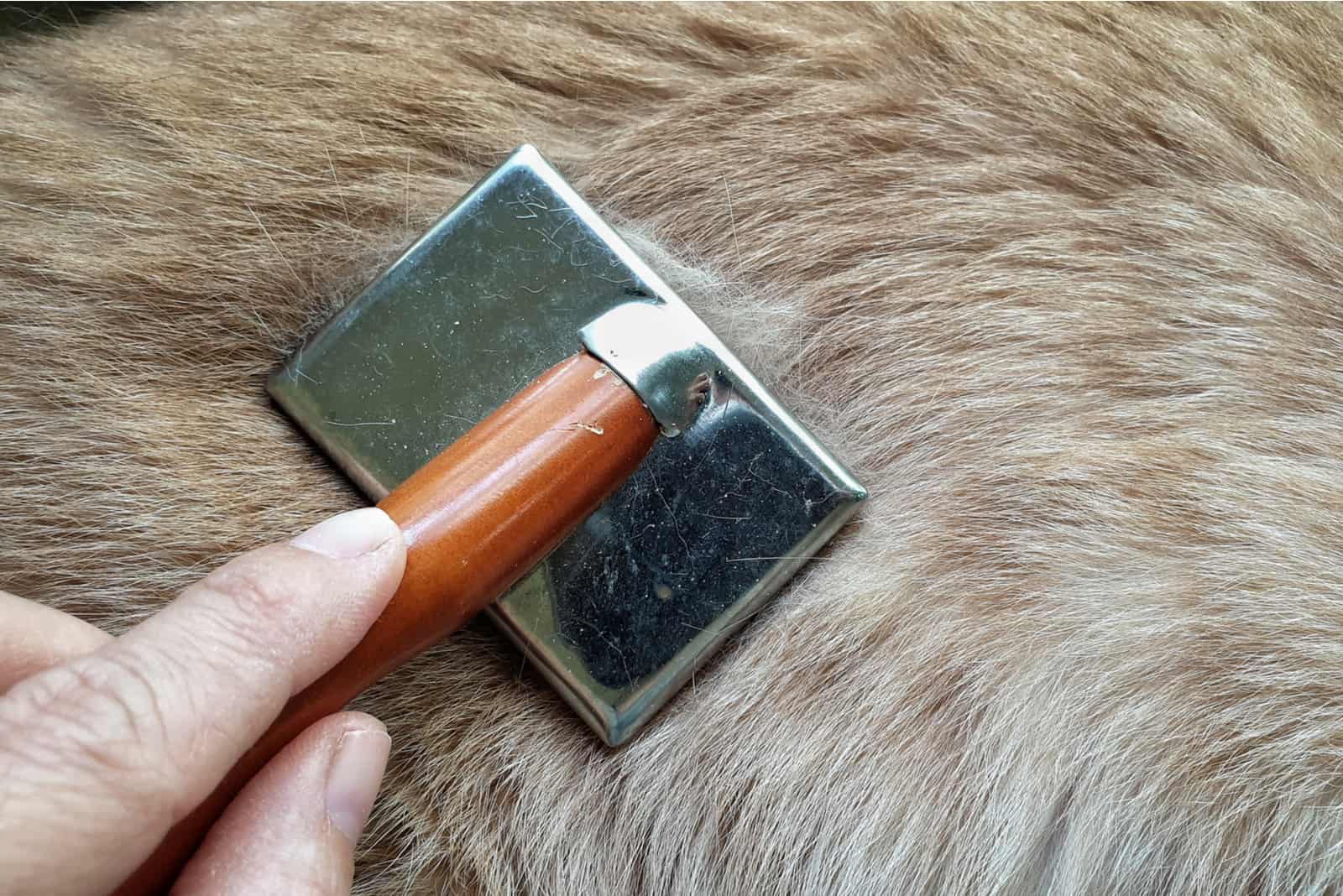
Poor grooming can contribute to dry, flaky skin on dogs. Grooming helps to remove dead skin cells and keep the skin and coat healthy. If your dog is not groomed regularly, the dead skin cells can build up, leading to dry, flaky skin.
There are several grooming practices that can help to prevent dry, flaky skin on dogs, like regular brushing, bathing, nail trimming, and ear cleaning.
Regular brushing can help to remove dead skin cells and keep the skin and coat healthy.
Trimming your dog‘s nails regularly can help to prevent dry, flaky skin on the paws. Long nails can cause the skin to rub against the ground, leading to dryness and flakiness. Not all dogs will be receptive to the process, so you might need to sedate them.
Your dog needs bathing every once in a while in order to remove dirt and debris from the skin and coat and prevent dryness and flakiness.
A moisturizing shampoo can help to add moisture to your dog’s skin and prevent dryness and flakiness. Since it’s comparable to dandruff in humans, they basically need an equivalent of Head & Shoulders.
You can also use a conditioner. A conditioner can help to add moisture to your dog’s skin and coat, helping to prevent dryness and flakiness. Just make sure not to bathe your dog too often, because excessive bathing can strip the natural oils from its skin.
And finally, regular ear cleaning and ear plucking can help to prevent ear infections, which can cause dry, flaky skin in dogs.
By incorporating these grooming practices into your dog’s routine, you can help to prevent dry, flaky skin and keep your dog’s coat and skin healthy.
Systemic Disorders
In some cases, dry, flaky skin can be a sign of a more serious underlying health condition, such as a hormonal imbalance or a thyroid disorder. If you suspect your dog may have a systemic disorder, it is important to consult a veterinarian.
What Are The Symptoms Of Dry Flaky Skin On Dogs?
The symptoms of dry flaky skin on dogs can vary depending on the underlying cause. Common symptoms include dry, flaky skin, itching, and redness.
In severe cases, the skin may become crusty or scaly, and the dog may lose its fur, particularly in certain hot spots along its coat. If your dog is experiencing any of these symptoms, it is important to consult a veterinarian for proper diagnosis and treatment.
How To Treat Dry Flaky Skin
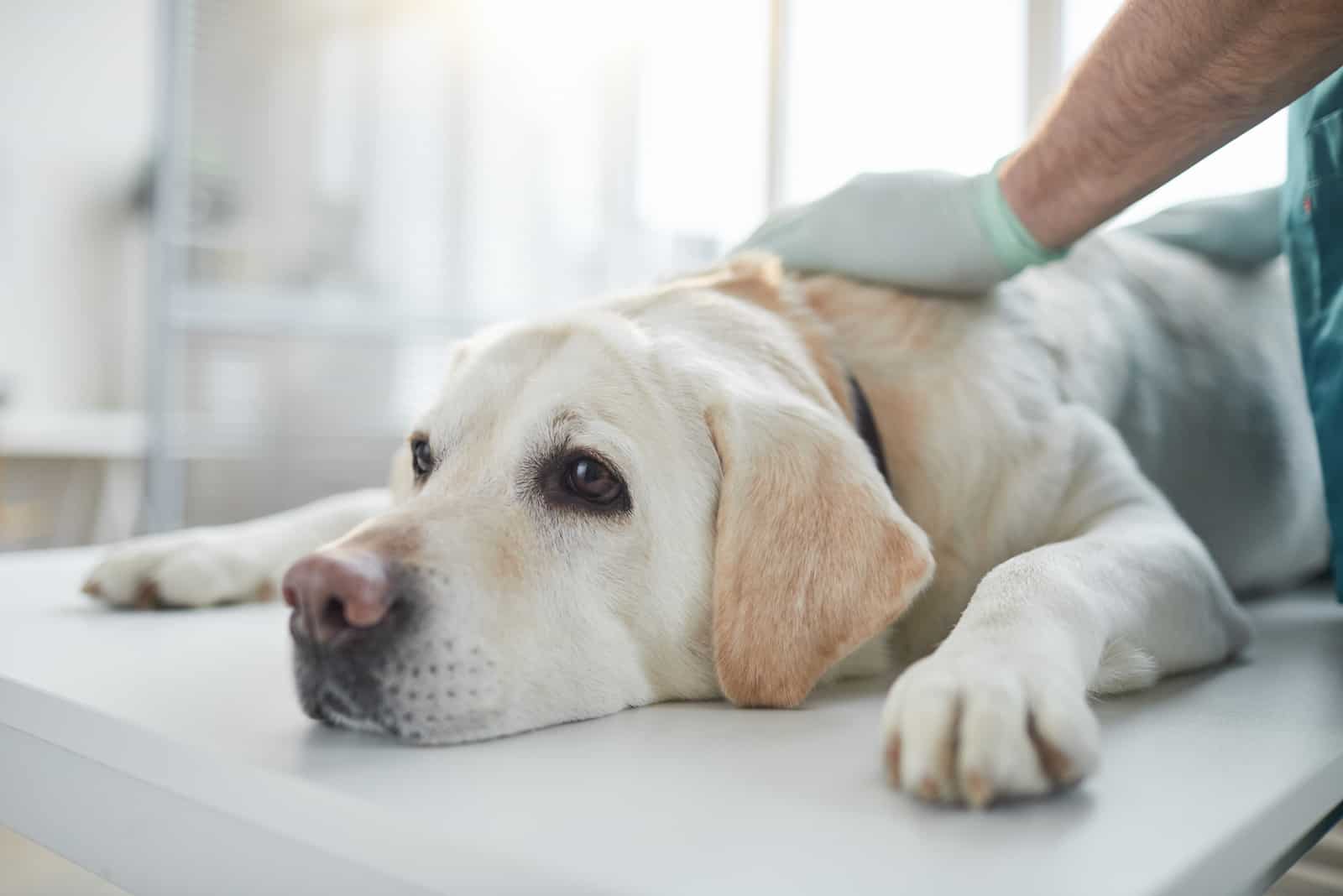
The treatment for dry flaky skin on dogs will depend on the underlying cause. If the dry skin is caused by an allergy or infection, your veterinarian may prescribe medications to help alleviate the symptoms.
If your dog’s dry skin is caused by a parasite, your veterinarian will recommend a treatment plan to kill the parasites and prevent future infestations.
How To Prevent It
In addition to any prescribed treatments, there are several things you can do at home to help treat and prevent dry flaky skin on your dog.
While we have listed a lot of them in the part of the article where we were talking about possible causes of dry skin, we thought it would be good to repeat some of the more important ones here, all in one place.
Let’s start with grooming. Regular and detailed grooming is an important aspect of dog ownership for a variety of reasons, and skin health is definitely one of them.
Having good grooming habits can help to remove dead skin cells and keep your dog’s skin looking as shiny as ever, but more importantly, it will keep it strong and healthy.
One thing that probably doesn’t get mentioned enough is hydration. Us humans are constantly told that we need to drink a lot of water during the day in order to keep our bodies hydrated.
Well, dogs need it too! But since they can’t exactly carry a water bottle around with them, you need to make sure your dog has access to clean, fresh water at all times to help keep its skin hydrated.
Feed your dog a healthy diet. A diet rich in essential nutrients, including fatty acids, can help to maintain healthy skin.
Avoid exposing your dog to harsh chemicals. Certain chemicals, such as those found in cleaning products and insecticides, can irritate your dog’s skin and cause dryness.
Use a humidifier. A humidifier can help to add moisture to the air, which will provide better environmental conditions for your pooch and therefore decrease the risk of it developing dry or flaky skin.
And finally, another thing that you should keep an eye on is keeping your dog safe from various infections that might cause dry or flaky skin.
If your pup spends a lot of time with other dogs, whether in a dog park or a kennel, there is a chance that it can catch something from them, so always be careful.
Are Some Breeds More Prone To Dry Skin Than Others?

Some breeds of dogs may be more prone to dry skin than others due to their breed characteristics. For example, dogs with short coats or those with thin, sparse fur may be more prone to dry skin due to their lack of natural insulation.
Dogs with certain medical conditions, such as hypothyroidism or Cushing’s disease, may also be more prone to dry skin.
Additionally, certain breeds, such as Labrador Retrievers, Golden Retrievers, or Irish Setters, may be more prone to allergies or other conditions that can cause dry skin.
It is important to consult a veterinarian if you are concerned about your dog’s skin health or if you notice any changes in its skin or coat.
How Dangerous Is Dry Skin For Dogs?
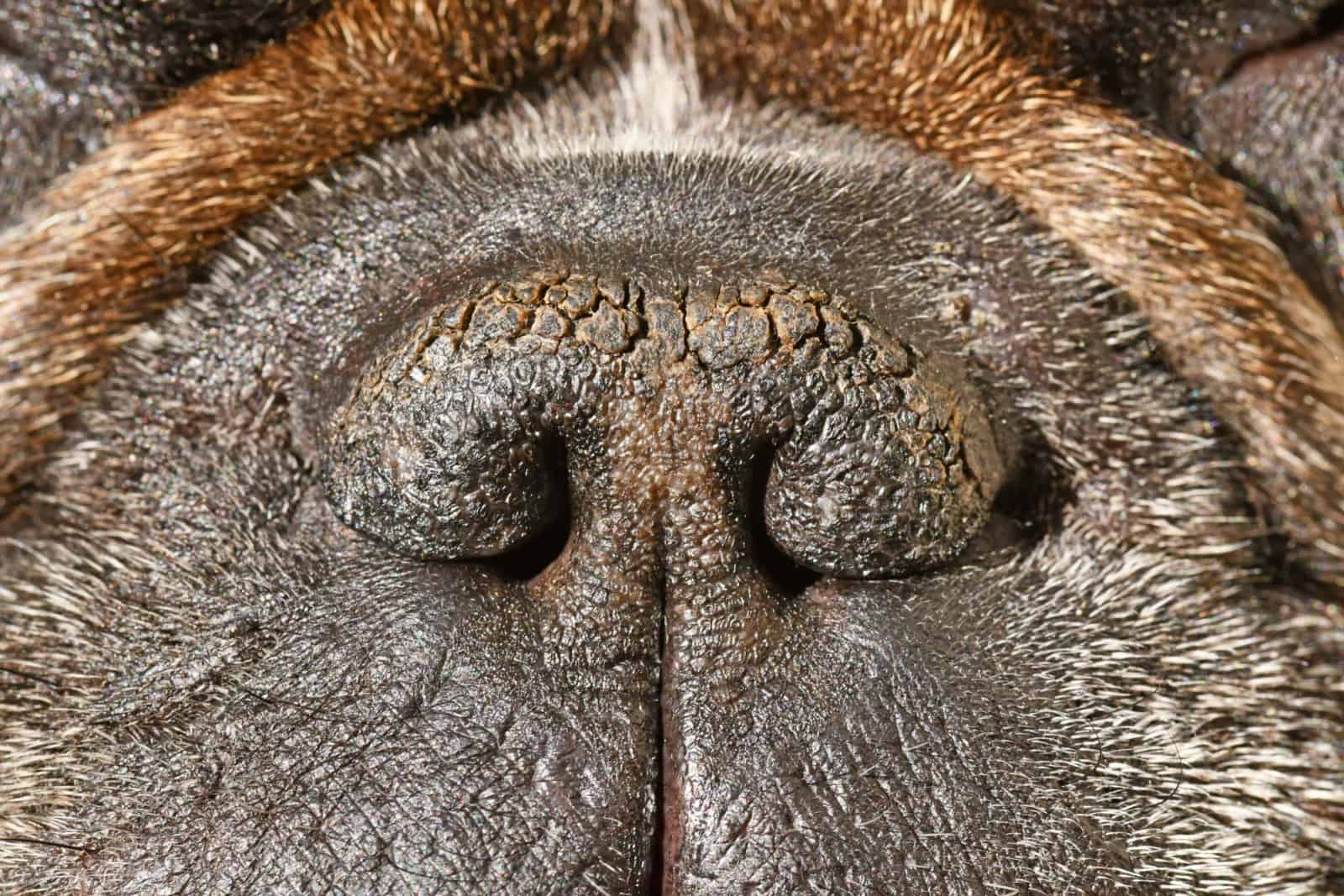
In most cases, dry skin is not a serious or dangerous condition for dogs.
However, if left untreated, dry skin can lead to other skin problems, such as infections or allergies. It is important to seek treatment for dry skin to prevent these complications and to keep your dog comfortable.
If you notice any changes in your dog’s skin or coat, or if your dog is exhibiting symptoms of dry skin, it is important to consult a veterinarian for proper diagnosis and treatment.
What Is Seborrhea?
Seborrhea is a skin condition that is characterized by the overproduction of oil (sebum) by the sebaceous glands.
This can lead to the development of flaky or scaly skin, as well as a greasy or waxy appearance. Seborrhea can be caused by a variety of factors, including underlying health conditions, allergies, and poor diet.
There are two types: seborrhea sicca and seborrhea oleosa.
Seborrhea sicca, also known as dry seborrhea, is characterized by dry, flaky skin. It is most commonly seen in dogs with short, thick coats, such as Pugs and Bulldogs.
Seborrhea oleosa, also known as oily seborrhea, is characterized by oily, greasy skin. It is most commonly seen in dogs with long, fine coats, such as Afghan Hounds and Bichon Frises.
Seborrhea can be a chronic condition and can be difficult to treat. It is important to consult a veterinarian if you suspect your dog may have seborrhea. The veterinarian will be able to diagnose the condition and recommend appropriate treatment options.
Treatment may include medications, dietary changes, and proper grooming practices. By addressing the underlying cause of seborrhea, you can help to manage the condition and keep your pup comfortable.
What Is The Difference Between Seborrhea And Mange?
Seborrhea and mange are two different skin conditions that can affect dogs. While they both can cause dry, flaky skin, there are several key differences between the two conditions.
Seborrhea is a skin condition that is characterized by the overproduction of oil (sebum) by the sebaceous glands. This can lead to the development of scaly, flaky skin, as well as a greasy or waxy appearance.
Seborrhea can be caused by a variety of factors, including underlying health conditions, allergies, and poor diet.
Mange is a skin condition that is caused by the presence of mites on the skin. There are three main types of mange: demodectic, sarcoptic, and cheyletiellosis (also called “walking dandruff”).
It normally requires veterinary assistance but you can also treat it at home.
How Can I Get Rid Of Scabs On My Dog’s Skin?

If you notice scabs on your dog’s skin, it is important to consult a veterinarian for proper diagnosis and treatment. Scabs can be caused by a variety of factors, including allergies, infections, parasites, and underlying health conditions.
The treatment for scabs will depend on the underlying cause of the scabs.
In the meantime, there are several things you can do to help remove the scabs from your dog’s skin, so read along if you are interested in those.
First things first, avoid scratching or picking at the scabs. Scratching or picking at the scabs can cause further irritation and may lead to infection.
Secondly, make sure to keep the area clean. Gently clean the area with warm water and mild soap. Avoid using harsh chemicals or scented products, as these can further irritate the skin.
Additionally, you can try using a moist compress. A moist compress can help to soften the scabs and make them easier to remove. To make a moist compress, soak a clean cloth in warm water and gently apply it to the scabs.
And finally, you can use a medicated ointment. Your veterinarian may recommend a medicated ointment to help manage the scabs. Follow the veterinarian’s instructions for use.
If you are unsure about how to manage the scabs, it is important to consult your veterinarian for guidance.
Conclusion
Dry flaky skin on dogs can be caused by a variety of factors, including allergies, infections, parasites, environmental conditions, and poor diet.
It is important to consult a veterinarian if you are concerned about your dog’s skin health or if you notice any changes in its skin or coat.
With proper treatment and prevention, you can help to keep your dog’s skin healthy and comfortable. Hopefully, this article has shed some light on the topic for you and helped you better understand what you need to do if your dog has dry flaky skin.
